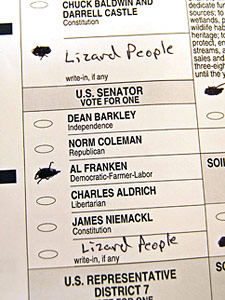When the Wall Street Journal claimed on Monday that Google was secretly backtracking on its net neutrality position, commentators were properly skeptical. Tim Lee (among others) argued that the Journal misunderstood what net neutrality means, and others pointed out gaps in the Journal’s reasoning — not to mention that the underlying claim about Google’s actions was based on nonpublic documents.
Part of the difficulty in this debate is that “net neutrality” can mean different things to different people. At least three flavors of “net neutrality” are identifiable among the Journal’s critics.
Net Neutrality as End-to-End Design: The first perspective sees neutrality as an engineering principle, akin to the end-to-end principle, saying that the network’s job is to carry the traffic it is paid to carry, and decisions about protocols and priorities should be made by endpoint systems. As Tim Lee puts it, “Network neutrality is a technical principle about the configuration of Internet routers.”
Net Neutrality as Nonexclusionary Business Practices: The second perspective see neutrality as an economic principle, saying that network providers should not offer deals to one content provider unless they offer the same deal to all providers. Larry Lessig takes this position in his initial response to the journal: “The zero discriminatory surcharge rules [which Lessig supports] are just that — rules against discriminatory surcharges — charging Google something different from what a network charges iFilm. The regulation I call for is a ‘MFN’ requirement — that everyone has the right to the rates of the most favored nation.”
Net Neutrality as Content Nondiscrimination: The third perspective sees neutrality as a free speech principle, saying that network providers should not discriminate among messages based on their content. We see less of this in the response to the Journal piece, though there are whiffs of it.
There are surely more perspectives, but these are the three I see most often. Feel free to offer alternatives in the comments.
To be clear, none of this is meant to suggest that critics of the Journal piece are wrong. If Tim says that Google’s plans don’t violate Definition A of net neutrality, and Larry says that those same plans don’t violate Definition B of net neutrality, Tim and Larry may both be right. Indeed, based on what little is known about Google’s plans, they may well be net-neutral under any reasonable definition. Or not, if we fill in differently the details missing from the public reporting.
Which bring me to my biggest disappointment with the Journal story. The Journal said it had documents describing Google’s plans. Instead of writing an actually informative story, saying “Google is planning to do X”, the Journal instead wrote a gotcha story, saying “Google is planning to do some unspecified but embarrassing thing”. The Journal can do first-class reporting, when it wants to. That’s what it should have done here.




